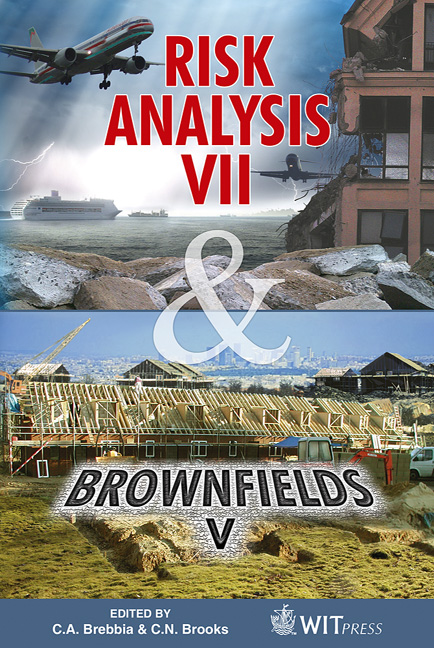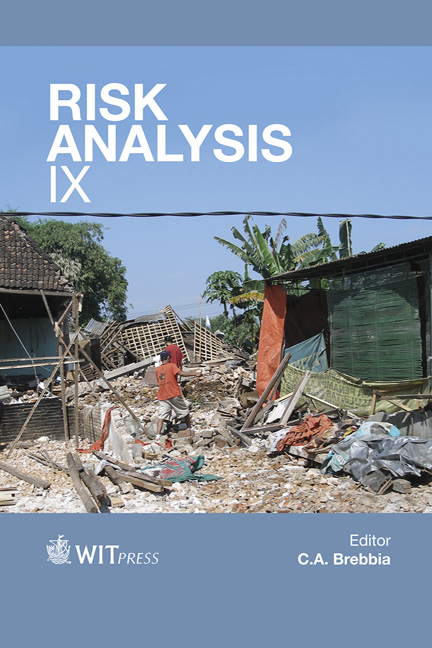Risk Analysis VII & Brownfields V
Simulation and Hazard Mitigation / Prevention, Assessment, Rehabilitation, Restoration and Development of Brownfield Sites
Edited By: C.A. Brebbia, Wessex Institute of Technology, UK and C.N. Brooks, Greenfield Environmental Trust Group, USA
Price
$827.00 (free shipping)
ISBN
978-1-84564-472-7
eISBN
978-1-84564-473-4
Pages
960
Book Series Title
WIT Transactions on Ecology and the Environment
Book Series
141
Transaction Series
WIT Transactions on Information and Communication Technologies
Transaction Volume
43
Published
2010
Format
Hardback
Risk Analysis VII
Scientific knowledge is essential to our better understanding of risk. Natural hazards such as floods, earthquakes, landslides, fires and others, have always affected human societies. Man-made hazards, however, played a comparatively small role until the industrial revolution when the risk of catastrophic events started to increase due to the rapid growth of new technologies. The interaction of natural and anthropogenic risks adds to the complexity of the problem.
Advances in computational methods and the ability to model systems more precisely now enable hazards to be quantified, their effects to be simulated and risk analysis to be pursued with greater accuracy, providing for more effective risk management. These developments not only are important for all areas of human endeavour but have particular relevance to environmental issues where the risks involved are substantial. Effective risk management and the mitigation of possible hazards have become a high priority of governments and a public concern.
This book encompasses a wide range of topics such as Risk Assessment; Risk Management; Hazard Prevention, Management and Control; Early Warning Systems; Natural Hazards; Simulation and Design in Road Evacuation; Vulnerability Issues; Health Risk; Debris Flow and Flood Hazards.
Brownfields V
The demand for development land has led to the reuse of properties that have been abandoned for a variety of reasons. Many of them are brownfield sites which have deteriorated in different ways, including by contamination. These sites are usually a burden in terms of economic losses and contribute to the deterioration of the quality of life of entire neighbourhoods. They create enormous social problems in addition to severe land, soil and habitat degradation. The rehabilitation and redevelopment of brownfields and derelict land, in general, is one of the first priorities of environmental and spatial planning. The main objective for these sites is to find appropriate new uses and activities, taking into account their economic and social acceptability.
Brownfield development is in many cases essential to attract new business to the locality and for the creation of healthy communities. Therefore, there is a great need for deeper research and study of all aspects of the problem – technical, institutional, financial, social – and an exchange of ideas, know-how and experience among experts and scientists.
The papers are grouped into the following subject areas: Rehabilitation; Risk Assessment; Case Studies.









